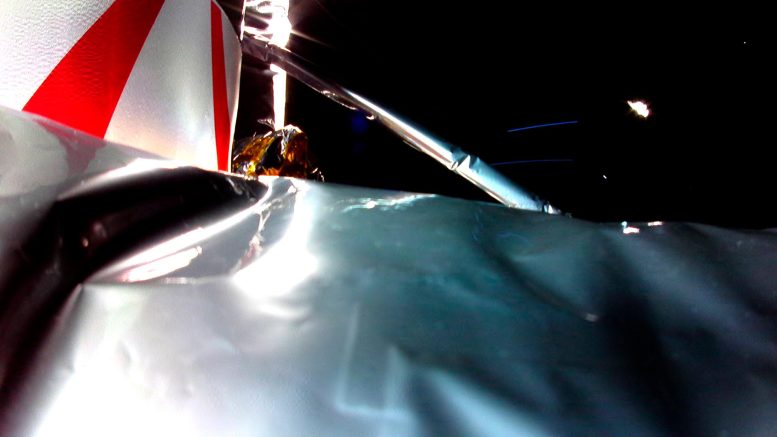
First image of Astrobotic’s Peregrine lander in space. Credit: Astrobotic
Astrobotic’s Peregrine lander experienced a propulsion issue soon after launch. NASA is assessing the impact on the mission’s scientific objectives and remains committed to supporting Astrobotic in resolving the issue.
Carrying NASA science planned for the Moon, United Launch Alliance successfully launched its Vulcan rocket and Astrobotic’s lunar lander early Monday morning. Astrobotic’s Peregrine lander experienced a propulsion issue after the spacecraft entered its operational state. This prevented Astrobotic from achieving sun-pointing orientation. The company is assessing and will provide more information as soon as it is available.
“Each success and setback are opportunities to learn and grow,” said Joel Kearns, deputy associate administrator for exploration at NASA’s Science Mission Directorate in Washington. “We will use this lesson to propel our efforts to advance science, exploration, and commercial development of the Moon.”
NASA is working with Astrobotic to determine impact to the agency’s five science investigations aboard the company’s Peregrine Mission One spacecraft. On Monday morning, Peregrine became the first American commercial lunar lander to launch on a Mission to the Moon. Soon after spacecraft separation, Peregrine experienced a propulsion issue. The privately designed and developed spacecraft uses novel, industry-developed technology, some of which has never flown in space. While it’s too soon to understand the root cause, NASA is supporting Astrobotic, and will assist in reviewing flight data, identifying the cause, and developing a plan forward.
“There are many challenges with spaceflight, and we’re incredibly proud of the Astrobotic and NASA teams that have put us one step closer to a robotic return to the lunar surface as part of Artemis. This delivery service model is a first for the agency and with something new, there is a higher risk,” said Joel Kearns, deputy associate administrator for exploration at NASA’s Science Mission Directorate. “NASA is committed to supporting our commercial vendors as they navigate the very difficult task of sending science and technology to the surface of the Moon.”
Copies of four of the NASA payloads aboard Peregrine are expected to fly on future flights including the Laser Retroreflector Array, Near-Infrared Volatile Spectrometer System, Neutron Spectrometer System, and Linear Energy Transfer Spectrometer. The Peregrine Ion-Trap Mass Spectrometer is not currently on a future CLPS flight.
Additional updates will be shared as the situation develops.
>>> Read full article>>>
Copyright for syndicated content belongs to the linked Source : SciTechDaily – https://scitechdaily.com/astrobotics-peregrine-lander-hit-by-critical-propulsion-issue-on-flight-to-the-moon/






























